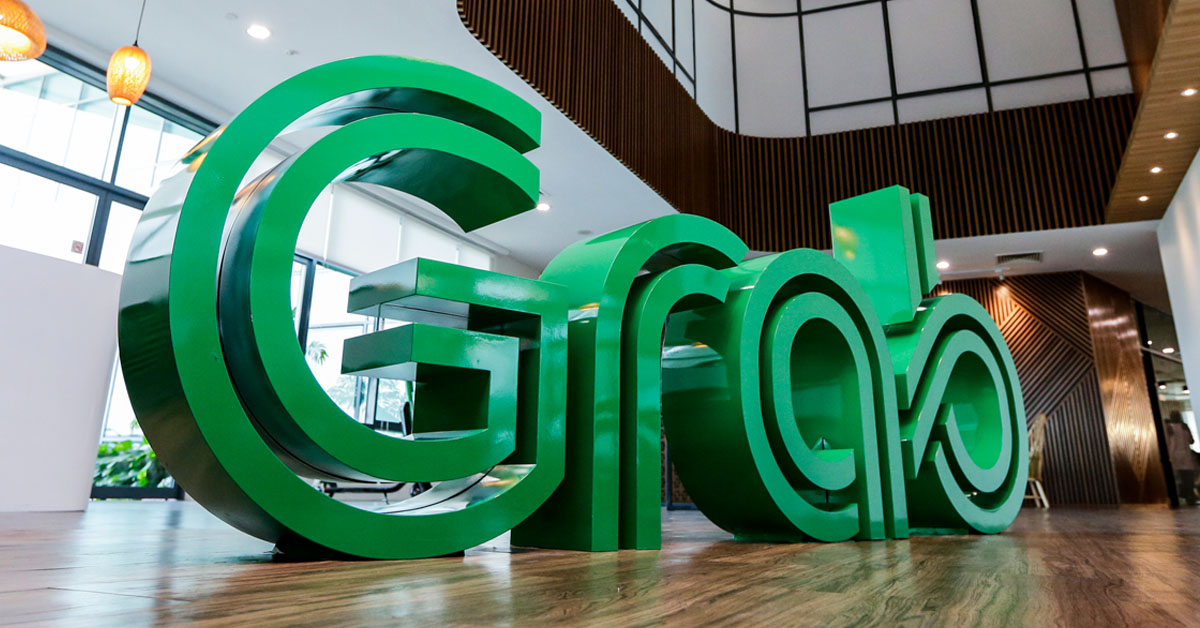When Grab Holdings Inc was first listed on Nasdaq—an American stock market based in New York—after a merger with special purpose acquisition company (SPAC) Altimeter Growth Corp in December 2021, it was expected to value at US$40 billion.
In the first quarterly result released by Nasdaq on Thursday (3 Mar), Grab reported a net loss of $1.055 billion for the three months from December, widening from a $576 million loss a year earlier.
This places Grab’s annual loss at approximately $3.4 billion, a grim increase compared to the $2.6 billion loss in 2020.
While the figures look like Grab is faring poorly, the co-founders of Grab, Anthony Tan and Tan Hooi Ling remain optimistic for the coming year, believing that the company’s earnings before interest, taxes, depreciation, and amortisation (EBITDA) will turnaround in 2023.
However, what are the reasons that led to Grab’s financial losses and share prices dropping?
Well, there are a few contributing factors, to be honest.
COVID-19 Pandemic
Owing to the outbreak of the pandemic in the Southeast Asian region where Grab’s main market is, namely Cambodia, Indonesia, Malaysia, Myanmar, Philippines, Singapore, Thailand and Vietnam, any ride-hailing or e-commerce company has been facing its highs and lows.
For instance, the pandemic led to a decrease in ride hailing by 11% in 2021, but the demand in delivery services climbed by 52%.
The growth in Gross Merchandise Value (GMV) has increased by 26% to $4.5 billion in the fourth quarter of 2021.
In the whole of 2021, the sum of transactions across all its platforms tallied up to US$16.1 billion, which is higher than the projection of US$15 billion to US$15.5 billion.
Though there was a slight dip of 2% in average monthly transacting users (MTU) from year to year due to lockdowns and circuit breakers in the third quarter, Grab ended the year strong, with 27,700,000 MTUs in December, higher than any month in 2021.
In general overview, Grab seems to have negated its ride-hailing losses through its delivery services and expansion into financial services.
In fact, the pandemic might have indirectly helped its growth due to the surge in demand for contactless delivery services.
Another potential market that Grab is already tapping into is the online grocery market, which is expected to triple to US$11.9 billion in 2025 from US$4.1 billion in 2020, according to Euromonitor International.
However, all these pretty figures have yet to take into account the investment and incentive costs, plus the initial sunk cost of getting listed in the first place.
Initial Listing Costs and Non-Cash Interest Expenses
In order to become listed on Nasdaq in the first place, Grab Holdings had to spend around $363 million, a one-time public expense that was paid in December.
According to an official statement from Grab, its losses of $3.6 billion in 2021 also include $748 million non-cash items such as interest charges accrued on Grab’s redeemable preference shares, stock-based compensation and fair value changes on investments.
Incentive Spending
However, Grab’s greatest expenditure is definitely attributed to incentive spending, or better termed as short-term and long-term investments.
While Grab’s GMV revenue has increased, the profit margin was cut severely by its massive spending on incentives, namely consumer discounts and driver incentives.
For the consumer incentives alone, like customer discounts and promotions, Grab’s spending doubled to $263 million in the fourth quarter.
In terms of delivery incentives, Grab spent US$443.3 million in the last quarter, almost double of the year earlier.
For the entirety of 2021, Grab’s incentive spending rose to US$1.78 billion from US$1.24 billion the previous year.
Therefore, the question to ask now is, why is Grab spending so much on incentives and investment?
According to Chief Financial Officer (CFO) Peter Oey, he stated: “We plan to be judicious and disciplined in allocating capital, as we double down on long-term growth opportunities of our on-demand, advertising, and financial services businesses.”
Most notably in its long-term plans, Grab Holdings is pouring money into attracting drivers as ride-share demand recovers from pandemic lows, and it has started to offer aggressive food-delivery promotions as people begin to dine out more often with the easing of COVID-19 restrictions.
For these reasons, the accounting revenue fell by 44% on the year to $122 million.
Competition from SEA Limited and GoTo Group
Besides Grab Holdings, there are two notable competitors vying for the Southeast Asian market called SEA Limited and GoTo Group.
These three companies are each a combination of ride-hailing, food delivery, financial services, and mobile gaming.
But regardless of which blend of services it offers, the three companies pursue the same goal: they are attempting to bring hundreds of millions of consumers together into a network of services.
As for SEA Limited, it is also based in Singapore and it’s highly likely that it has infiltrated your lives without you fully realising it.
Simply put, SEA Limited is the overarching parent group of the e-commerce company Shopee, with a gaming sidearm subsidiary called Garena.
For a bit more detail into Garena, it is the developer and publisher of the popular mobile game Free Fire, and the SEA region for the Multiplayer Online Battle Arena (MOBA) game League of Legends runs under its game client.
SEA Limited is the biggest behemoth among the three companies; ever since it was listed in Nasdaq in 2017, its market value has increased seven-fold by 2019 to $145 billion, making it the largest listed firm in Asia.
The other competitor in the SEA region is the GoTo Group, which is formed from the merger of Indonesia-based ride-hailing Gojek and e-commerce company Tokopedia.
According to Singapore DBS Group Holdings, one of the impetus behind the generous incentives and consumer discounts that Grab has been dishing out since early 2022 is to render its rival’s GoTo’s mobility business in Singapore irrelevant.
The same increase of incentive spending can be expected in Indonesia from Grab, where the GoTo Group has a steady foothold of a fleet of 2 million drivers, and its total transactions in its own homebase have reached $22 billion, which is 2% of Indonesia’s GDP.
In order to compete and stay relevant, Grab really has no alternative but to spend more on its investments and plan for the long haul.
Stock Plunge on Nasdaq
Regardless of how justified Grab’s incentive spendings and financial decisions are, it doesn’t change the fact that its stocks have plummeted by 63% since its debut, making it one of the worst performers on the Nasdaq Composite Index.
The drop has swept out at least US$22 bullion (S$29.85 billion) from Grab’s market capitalisation.
Worse, Grab shares dropped by 37% on Thursday (3 Mar) after the resulting posting, as 115 million shares changed hands, which is more than four times the average over the past month.
In the eyes of the investors, the constant losses that Grab has been racking up since its founding has only proven that it has yet to reach its profitability. The fact that its fortunes have risen and fallen along with COVID-19 infection rates doesn’t help matters either.
However, other analysts like Stephanie Cheong from Moody noted that Grab is currently holding onto the leading position in ride-hailing and food delivery across the SEA region, compared to the likes of foodpanda or Deliveroo.
Grab is showing that it has good long-term growth prospects, only bolstered by its commitment to exercise cost discipline, and as long as the company continues to have substantial cash holdings, it should be able to fund its large operating losses and cash burns over the next two to three years.
Cheong adds, “At the same time, the rating reflects uncertainties around Grab’s ability to achieve sustained profitability as low switching costs for customers, drivers, and merchants, as well as higher competitive intensity from existing and new players, could disrupt the company’s path to profitability.”
In short, it’s difficult to speculate how successful Grab will be when it’s confronted with a list of variables.
Will it come out ahead, like how it managed to surpass Uber in the battle of attrition in 2018? Or will it suffer a similar fate as Uber, where it gets trampled by its competitors?
Nevertheless, Grab expects nothing less than success for itself. the
For the first quarter of 2022, the company anticipates that its revenue will rise, wherein the GMV for deliveries will increase from US$2.4 billion to US$2.5 billion, and for the mobility GMV to rise from US$750 million to US$800 million.
There’s no need to splash water on their parade; whether they are correct in the decision-making won’t become apparent immediately, and you only stand to gain as much as you’re willing to invest.
It should be noted though, while SEA Limited and the Malaysia turned Singapore-based Grab Holdings share the same home plate, they don’t directly and fully clash in terms of the services they offer.
Cooperation should be marked as one of the options for the companies too.
Business is business, after all.
Read Also:
- Everything About the Expansion of VTLs That Include VTL Direct to Penang
- Edmund Chen Manages to Sell His NFT Painting for About $53,000
- Government Responds to Question of When We Can Stop Using TraceTogether & SafeEntry
- China Reportedly Knew About Russia’s Invasion in Advance & Ask Russia to Invade After Winter Olympics
Featured Image: Shutterstock / Lens Hitam



